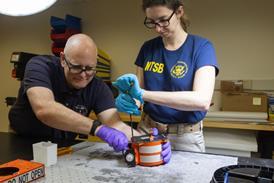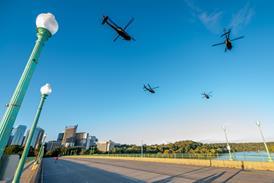Airbus Defence & Space is determined to establish itself in the top tier of global unmanned air vehicle suppliers, with a joint MALE 2020 project being proposed with Alenia Aermacchi and Dassault intended to head the process.
“Before the summer, I hope to have a strategy for UAVs approved by the [Airbus] group,” says the company’s military aircraft executive vice-president, Domingo Ureña Raso. “We have today all the bricks to make an extremely good performing UAV,” he says, referring to the medium-altitude, long-endurance proposal as “another try to show some of the [European] countries that we are ready to go”.
Speaking to journalists near Seville, Spain on 9 June, Ureña warned that the lack of new European military aircraft developments since the launch of the A400M transport in 2003 poses a threat to the continent’s defence industry.
“Europe, I don’t think it has any strategy,” he says. “Today, collaboration remains an exception, unfortunately. It is now up to the industry to see how we can push some nations – why not inside and outside of Europe – to create the next generation of capabilities.”
Likening the drive behind the proposed tri-national UAV to the industry push that helped to create Concorde and the first Airbus commercial aircraft, Ureña asks: “Can Europe be outside of UAV technology? In the next 20 to 30 years can we live without this technology, with the amount of knowledge that we have today?”
Noting that the unmanned sector has potential applications across the military, civilian and many other sectors of aerospace, he notes: “There’s much more behind MALE 2020. We have the capability: we have the people.”
However, he cautions: “We are not going to launch if we do not have a European aim for the programme,” which is currently being sought from the governments of France, Germany and Italy.
“The governments have received the proposal. They are reviewing the proposal and they have not come back to us yet. We expect this to happen probably after the summer break,” says Jens Nielsen, Airbus’s head of unmanned aerial systems. “In our proposal it is contained who is doing what, and which work share do we anticipate. This is agreed from an industry point of view.”
If the joint proposal receives the support required, a roughly two-year definition phase activity would be performed. “We expect that activity to start soon,” says Nielsen. “Our wish is this year.”
This is not the first attempt to launch a European MALE project. Former EADS company Cassidian has previously spent around €1.8 billion ($2.4 billion) on UAV development activities such as the Talarion vehicle.

BillyPix
Highlighting his ambitions for the sector, Ureña says: “In the future we will be maybe the third player, and we will fight to be the number one or two – like in the rest of the groups [within Airbus].”
The proposed MALE platform is likely to be in the 5t maximum take-off weight category.
Antonio Rodríguez Barberán, head of commercial for the military aircraft unit, also underscores the determination within the unified Airbus to gain support for the MALE initiative, despite the cash-strapped nature of its planned partner governments. “If they throw us from the window, we’ll come from the chimney,” he says. “Airbus is going to be there.”
Source: Flight International


























